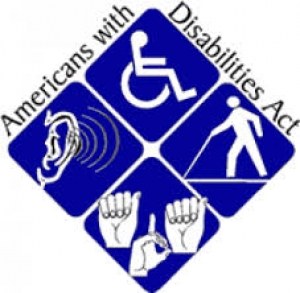Healthy Employment Practices Improve Productivity and Workplace Culture
I recently had the opportunity to speak at the Central Bucks Chamber of Commerce’s health and wellness event, “Well Employees = Well Business: Best practices and Legal Considerations” along with Megan Duelks, CoE Employee Health Innovations at Johnson & Johnson. Ms. Duelks’ discussion of wellness programs at Johnson & Johnson along with the excellent questions from the attendees highlighted that a workplace with good risk management is also a positive, professional and productive workplace. Good risk management should include three important features, no matter the size of the employer: professionalism, fairness, and a focus on employee performance.
Professionalism means that an employer has in place the important features that protect both employees and employers: a handbook, policies that prohibit discrimination, harassment and retaliation, and a good complaint procedure. Professionalism also requires that complaints are taken seriously, investigated properly and redressed in a meaningful way.
Fairness requires that those policies are followed consistently for each employee, and that exceptions are made for good business reasons.
A focus on employee performance helps to meet these goals. At the seminar, employers were concerned about how to communicate with an employee in crisis. The goal is to help the employee, but protect the employer from unnecessary liability. Having clear policies in place will help to meet these goals. Where the crisis is impacting the employee’s performance, this is where the discussion must start. A focus on performance, which includes anything from attendance to the quality of work, creates a platform for a professional conversation about how to address the issue. An employer is always free to end such a discussion by identifying the resources the employer offers for employees facing personal, family, or health issues.
In my practice at Antheil Maslow & MacMinn, I have assisted many employers to put a program in place that improves culture, manages risk, and creates a framework to address employee crises.
Telecommuting: A reasonable accommodation under the American with Disabilities Act?
Under the Americans with Disabilities Act (ADA), an employer must provide reasonable accommodations to an employee who is disabled (as defined under the ADA) and who is otherwise qualified for the position.
An issue frequently faced by employers and addressed by the courts is what constitutes a “reasonable accommodation”?
A federal appeals court recently addressed this matter, where an employee confined to bed because of complications from her pregnancy, requested that she be permitted to work from home or a hospital (telecommuting) for a ten week period. Mosby-Meachem v. Memphis Light, Gas & Water Div. 2018 WL 988895 (6th Cir. February 21, 2018). The employee served as an in-house counsel for a corporation. Her request to telecommute for ten weeks was denied. The company did not at the time of the request have a formal written telecommuting policy-although it did permit telecommuting and permitted the employee on a prior occasion to telecommute. The employee filed suit under the ADA, and a jury awarded her $92,000 in compensatory damages. In affirming the jury’s award, the court held that a “rational jury [under the specific facts of the case,] could find that the employee was a qualified employee, [covered by the ADA] and that working remotely for ten weeks was a reasonable accommodation.” In reaching its conclusion, the court found that sufficient evidence had been presented to the jury to support the employee’s claim that she “could perform the essential functions of her job remotely for ten weeks…” The court rejected the employer’s claim that the written job description for this employee dictated the opposite result because the job description was outdated and did not reflect the employee’s actual work requirements. The court, in affirming the jury verdict, also relied on the fact that the employer did not engage in an “interactive process” with the employee to understand the limitations the employee faced, and what accommodations might be put in place to allow the employee to continue at her job. Instead the employer pre-determined what it intended to do without conversing with the employee. Several lessons can be drawn from this case: First, even if an employer has no telecommuting policy or a policy which does not permit telecommuting, the employer, under a particular set of facts, may be in violation of the ADA if telecommuting would be found to be a reasonable accommodation. Secondly, an employer must engage in an interactive process with an employee to determine what, if any, accommodation might be reasonable under the particular circumstances. This means direct communication between the employer and the employee. An inflexible policy of the employer may end up causing the employer to be in violation of the ADA. Finally, written job descriptions must be reviewed and updated as needed. An outdated or inaccurate job description cannot help an employer and in many instances will be detrimental to an employer seeking to defend against a claim of job discrimination.
A Closer Look at Harassment Training
I had the pleasure of revisitng the issue of training to avoid or address harassment and discrimination in the workplace at the Lower Bucks Chamber of Commerce ECONference 2018 on May 23, 2018. The questions from participants reminded me that training is a valuable tool not only for risk prevention, but also to improve workplace culture.
Training has become a “check the box” activity: the employer gets to say that it provided training, in the event of a claim. The employees are required to attend in order to keep their jobs, and so they attend and zone out. Employer and employees are going through the motions. The lawyers told them to train, so the employer is training.
Here’s what I’ve learned: the serious offenders, those who engage in serial harassment, inappropriate relationships or even assault, are going to engage in that behavior no matter what training you provide. An employee who lacks the insight to know that certain behaviors are unacceptable (everywhere, really) will not have an epiphany during mandatory employee training. One-on-one training often helps in these situations, but not always, and not fundamentally (that is, the employee will know what to do to stay employed, but will not really care that the behavior was inappropriate).
Employers should provide training – it is good risk management for certain employers. But, perhaps it should be a more sincere activity on both sides: employers should consider more interactive training, smaller groups and individualized training for departments. Employers should engage in self-evaluation of workplace culture prior to planning the training.
Further, if the goal is prevention of harassment, hostile work environment claims or other unacceptable workplace behaviors, generalized training is not always the answer. Instead, employers should remember that culture comes from the top. If officers, supervisors and managers maintain professionalism, it sets the tone. It might be valuable to warn and provide one-on-one training to managers who do not demonstrate professional behavior, but in the end, appropriate workplace behavior should be a qualification for any leadership role.
No lawyer will ever advise an employer not to provide training, but perhaps it is time to be more thoughtful about what training looks like for specific employees. Avoiding litigation cannot be the only goal, or the training will never work. I frequently work with employers to come up with meaningful training plans that comply with the law, and are appropriate for their business.
Supreme Court Finds ‘Service Advisors’ Exempt from Overtime Rules
Reprinted with permission from the April 18th, 2018 issue of The Legal Intelligencer. (c) 2018 ALM Media Properties. Further duplication without permission is prohibited.
The Supreme Court’s decision in Encino Motorcars, LLC v. Navarro interprets a very specific exemption to the overtime rules imposed by the Fair Labor Standards Act, 29 U.S.C. 201, et seq. (“FLSA”), but the Court’s language and reasoning have game-changing ramifications. The Court’s rejection of the principle that courts should narrowly construe exemptions to the FLSA turns decades of FLSA caselaw on its head.
The facts of Encino Motorcars are deceptively narrow. Employees classified as service advisors for a car dealership challenged the car dealership’s classification of the service advisors as exempt from the FLSA. The FLSA requires that employers must pay overtime to employees who work more than 40 hours in a week. 29 U.S.C. § 207(a). The dealership claimed the exemption under a statutory exemption that applies to car dealerships. 29 U.S.C. § 213. Specifically, the section in question exempts from overtime pay requirements:
Any salesman, partsman, or mechanic primarily engaged in selling or servicing automobiles, trucks, or farm implements, if he is employed by a nonmanufacturing establishment primarily engaged in the business of selling such vehicles or implements to ultimate purchasers.
Spring Cleaning Checklist for Employers
Finally, Spring is here! It has certainly been a long, cold, snowy, and relentless winter. I want to take this opportunity to wish all of you a snow-free, warm and sunny Spring. As an employment lawyer, I'd like to do my part to help all of you employers maintain a care-free Spring mood by offering the following Spring cleaning checklist, which can protect your business from litigation and compliance risks.
PROPOSED PENNSYLVANIA LEGISLATION TO BAN NONCOMPETES
Reprinted with permission from the February 26th, 2018 issue of The Legal Intelligencer. (c) 2018 ALM Media Properties. Further duplication without permission is prohibited.
At the end of 2017, legislators in Pennsylvania proposed legislation to ban noncompete agreements. The proposal is consistent with a legislative trend in other states. In New Jersey, the Senate proposed a bill (Senate Bill 3518) that would place limits on the ability to impose noncompetes (there is a similar Assembly Bill, A5261). Both of these bills reflect already existing challenges in drafting and enforcing restrictive covenants.
Pennsylvania’s House Bill 1938 was referred to the Labor and Industry Committee on November 27, 2017. The Bill recites a declaration of policy that reads like a defendant’s brief in a preliminary injunction case. It states, summarizing, that the Commonwealth has an interest in the following: allowing businesses to hire the employees of their choosing; lowering the unemployment rate; allowing employees to make a living wage; allowing employees to “maximize their talents” to provide for their families; promoting increased wages and benefits; promoting innovation and entrepreneurship; promoting unrestricted trade and mobility of employees; allowing highly skilled employees to increase their income; attracting high-tech companies; disfavoring staying in jobs that are not suited to qualifications; and disfavoring the practice of leaving the Commonwealth to seek better opportunities.
The Bill defines a “covenant not to compete” broadly as an agreement between an employer and employee that is designed to impede the ability of the employee to seek employment with another employer. Interestingly, the Bill does not seem to distinguish between a non-solicitation restriction and non-competition restriction. The Bill prohibits all “covenants not to compete,” and does not allow a court to rewrite the covenant not to compete to make it enforceable.
There are exceptions: “reasonable” covenants not to compete that relate to an owner of a business; covenants not to compete involving a dissolution or disassociation of a partnership or a limited liability company; and “reasonable” covenants not to compete that were in place prior to the effective date of the statute. One presumes that previous case law regarding what constitutes a “reasonable” restriction on competition will apply. The Bill would allow an employee to recover attorneys’ fees and damages upon prevailing in a suit brought by the employer related to the enforcement of a covenant not to compete.
The historical reluctance of courts to enforce restrictive covenants as written has certainly impacted how and when employers use such documents. Employers (with their attorneys) have attempted to draft documents that a court will enforce, and given careful thought to filing suit in the event of a breach. This Bill, however, would change that calculus dramatically; not just because of the outright ban on arguably both noncompete and nonsolicitation agreements, but also because of the attorneys’ fees provision. Employers who get it wrong will pay attorneys’ fees and damages, including punitive damages, to the employee. It may no longer be wise to file preliminary injunctions as a deterrent or a means to a resolution. If passed, this Bill would require employers to focus on two important concepts going forward, one legal, and one not legal: retention of key employees and protection of trade secrets.
The Bill remains with the House Labor and Industry Committee and does not, at this time, appear on that committee’s schedule.
The New Jersey Bill would also impact the legal and economic strategy of using and enforcing restrictive covenants. Introduced on November 7, 2017, the Bill recites public policy goals with regard to covenants not to compete similar to those recited in the Pennsylvania Bill. The Bill defines a restrictive covenant more narrowly than the Pennsylvania Bill: agreements under which the employee agrees not to engage in certain specified activities competitive with the employer after the employment relationship has ended. The New Jersey Bill does not ban covenants not to compete, but instead imposes a series of restrictions that would seriously impact how noncompetes were enforced and drafted, and would have required employers to pay employees for the period of the restriction. The New Jersey Bill died in committee.
Both Bills reflect the historical judicial reluctance to enforce noncompetes, and change the economics and legal issues related to those agreements dramatically. They are in line with restrictions in other states like California, North Dakota and Oklahoma. Most importantly for practitioners, they reflect that reliance on a well-drafted choice of law provision may not save the day. Case and statutory laws on this particular topic are not really predictable in the usual way. Just by way of example, Massachusetts has eight outstanding bills related to the topic, all of which were the subject of hearing on October 31, 2017, and both Vermont and New Hampshire proposed outright bans earlier this year. Even the results of upcoming elections could change the statutes in any particular state.
These bills proposed late in 2017 reflect current challenges in drafting and enforcing agreements that are enforceable and highlight the importance of considering each decision carefully. Drafters must consider carefully the specific interest an employer is attempting to protect, but even the most careful drafting may not survive new legislation. It will be interesting to see whether, and in what form, legislatures may codify some of these challenges in the future.
Patricia Collins is a Partner with Antheil Maslow & MacMinn, LLP, based in Doylestown, PA. Her practice focuses primarily on employment, commercial litigation, and health care law. To learn more about the firm or Patricia Collins, visit www.ammlaw.com
Pennsylvania Court Imposes Increased Overtime Regulations
Reprinted with permission from the January 18, 2018 issue of The Legal Intelligencer. (c) 2018 ALM Media Properties. Further duplication without permission is prohibited.
In a recent decision, the Pennsylvania Superior Court complicated the already tricky business of paying nonexempt employees on an hourly basis for Pennsylvania employers. In Chevalier v. Hiller, the Court found that a “fluctuating workweek” overtime calculation method, approved by federal regulation, violates Pennsylvania’s Minimum Wage Act, 43 P.S. §333.101 et seq. (“PMWA”). The Superior Court reversed the trial court’s grant of summary judgment in favor of the employees, in a comprehensive opinion that requires Pennsylvania employers to review carefully their overtime calculation methods.
The employees in this case were managers at various levels for GNC. GNC calculated their overtime pay using the “fluctuating work week method.” Under this method, in an example provided by the Superior Court, overtime was calculated as follows: employees were paid $1000 a week regardless of the number of hours worked in a week. In one week, the example goes, the employee worked 50 hours. GNC thus calculated the employees “regular rate” at $20 an hour. GNC then paid the employee an additional $10 an hour for the ten hours over 40, resulting in $1100 in wages for the 50 hour week.
The employees argued that this method was improper under the PMWA, and the trial court agreed. The trial court opined that the rate instead should have been calculated using the “forty hour” method. Under this method, the regular rate is determined by dividing the weekly salary of $1000 by forty hours, to produce a rate of $25 an hour. Then, the additional ten hours over forty worked should have been paid at time and a half for an additional $375, resulting in $1375 in wages for the 50 hour week. Notably, had the Superior Court agreed with the trial court, the cost of paying nonexempt employees on a salary basis would have increased exponentially.
Instead, the Superior Court disagreed with the trial court and found that the regular rate was properly calculated using the “fluctuating workweek method,” that is, that the employer’s calculation of the regular rate by dividing the employee’s salary in a given week by the number of hours the employee actually worked did not violate the PMWA.
However, the Superior Court found that GNC’s method of paying for the overtime hours violated the PMWA. The Superior Court found that PMWA required the payment of an overtime premium of 1 and ½ times the employee’s regular rate for all hours in excess of forty in a work week. Accordingly, using the fifty hour example set forth above, that employee should have received $200 in overtime.
The Superior Court began its analysis by noting the purpose of the PMWA, which mirrors the language of the FLSA, “to protect employees who do not have real bargaining power.” The Court noted that no Pennsylvania appellate court had evaluated the propriety of the fluctuating workweek method under the PMWA, but that some federal courts had addressed the PMWA’s overtime requirements. In those cases, the federal courts agreed with the conclusion of the Superior Court regarding the premium due, but did not address the appropriate method for calculating the regular rate.
The Superior Court’s holding imposes a different requirement than the federal Fair Labor Standards Act. Under the FLSA, and cases interpreting it, an employer is free to use the fluctuating work week method, and to pay a premium of one-half the hourly rate for hours over forty in a workweek, on the theory that the regular rate for those hours is captured in the salary. While the Superior Court found that the PMWA permitted a calculation of the regular rate, consistent with the FLSA, using the fluctuating workweek method, the Superior Court found that Pennsylvania law would not permit a premium of only ½ that regular rate.
Instead, the Superior Court found that the applicable regulations required the payment of one and one-half times the regular rate for hours over forty in a workweek. The applicable regulations require that “each employee shall be paid for overtime not less than 1-1/2 times the employee’s regular rate of pay for all hours in excess of 40 hours in a work week.” 24 Pa. Code § 231.41. The regulations do permit the payment of half the regular rate only for employees who are paid a flat sum for a day’s work. 34 Pa. Code § 231.43(b). Finally, another regulation permits employer and employee to come to an agreement as to the “basis rate” for payment of work in excess of the maximum workweek, but only if the employer uses a multiplier of one and one-half. In other words, the Superior Court found, in all instances where the regulations address the appropriate multiplier, the regulations required the payment of one and one-half times the regular rate. The Court pointed out that the Department of Labor did not adopt the federal regulation that expressly permits the payment of half the regular rate as the overtime premium, although it could have done so. The Court found the decision not to adopt that federal regulation was a deliberate reflection of the purpose to protect employees.
The Superior Court’s decision creates a dilemma for Pennsylvania employers using the fluctuating workweek method. Pennsylvania employers currently paying an overtime premium of half the hourly rate for hours over forty in a workweek to nonexempt, salaried employees, are complying with federal, but not Pennsylvania law. Employers will need to evaluate their overtime calculation policies and review whether paying nonexempt employees on a salary basis continues to make economic sense.
Patricia Collins is a Partner with Antheil Maslow & MacMinn, LLP, based in Doylestown, PA. Her practice focuses primarily on employment, commercial litigation, and health care law. To learn more about the firm or Patricia Collins, visit www.ammlaw.com
Caution: Intern or Employee?
Under the federal Fair Labor Standards Act (FLSA), employers in “for-profit” enterprises are required to pay compensation to their employees, including a designated minimum wage and overtime pay.
An issue often faced by employers is whether an intern or student is actually an employee entitled to compensation, or whether the intern or student may work without receiving pay.
On January 5, 2018, the United States Department of Labor (“DOL”), which enforces the FLSA, announced in Field Assistance Bulletin No. 2018-2, that it was now going to follow the decision of several appellate courts in promulgating a new test for determining if an intern is actually an employee entitled to compensation.
Specifically, the DOL, announced that it would use the “primary beneficiary test” to determine the status of the would-be intern. The test is intended to be flexible and allows courts or the DOL to review the “economic reality” of the relationship to determine which party, would-be intern or employer, is the primary beneficiary of the relationship.
As part of the “primary beneficiary test”, the DOL adopted seven factors used by the courts:
1. The extent to which the intern and the employer clearly understand that there is no expectation of compensation. Any promise of compensation, express or implied, suggests that the intern is an employee—and vice versa.
2. The extent to which the internship provides training that would be similar to that which would be given in an educational environment, including the clinical and other hands-on training provided by educational institutions.
3. The extent to which the internship is tied to the intern’s formal education program by integrated coursework or the receipt of academic credit.
4. The extent to which the internship accommodates the intern’s academic commitments by corresponding to the academic calendar.
5. The extent to which the internship’s duration is limited to the period in which the internship provides the intern with beneficial learning.
6. The extent to which the intern’s work complements, rather than displaces, the work of paid employees while providing significant educational benefits to the intern.
7. The extent to which the intern and the employer understand that the internship is conducted without entitlement to a paid job at the conclusion of the internship.
The DOL stated that no one factor is determinative of the issue and that the ultimate classification of intern or employee “under the FLSA necessarily depends on the unique circumstances of each case”.
With respect to volunteers for governmental services and non-profits, the Wage and Hour Division of the Department of Labor set forth the following in Fact Sheet No. 71:
“The FLSA exempts certain people who volunteer to perform services for a state or local government agency or who volunteer for humanitarian purposes for non-profit food banks. WHD also recognizes an exception for individuals who volunteer their time, freely and without anticipation of compensation, for religious, charitable, civic, or humanitarian purposes to non-profit organizations. Unpaid internships for public sector and non-profit charitable organizations, where the intern volunteers without expectation of compensation, are generally permissible.”
Employers who use interns should carefully review whether they are complying with the law. AMM’s Employment Law attorneys can assist you with this and all compliance issues. To learn more about Michael Klimpl, visit ammlaw.com.
New Year's Resolutions for Employers
The Employment Law Department here at Antheil Maslow & MacMinn wishes a Happy New Year to all of our clients. In the interest of making this year the best it can be, we offer the following New Year’s resolutions for employers:
1. Resolve to document:
Document everything: employee successes, employee’s failures to meet expectations, attendance, complaints, suggestions, and anything that may be of significance to the employee or the workplace. This is good risk management for employers. For employees, it is a fundamental aspect of workplace fairness, and prevents the situation where an employee may be caught off guard by a particular decision of the employer.
A corollary to this resolution is to make documentation easy. For example, managers can use email, which will include a date and time stamp, be maintained on company servers, and creates an electronic paper trail. Managers are more likely to comply with a simple system.
2. Resolve to retain key employees:
We spend much of our day talking about restrictive covenants – agreements not to compete or solicit customers and employees after the termination of employment. We draft them, read them, counsel employees and employers about them. While these agreements are important to protect the employer, they will not help employers keep their stars. Instead, employers should ensure a positive workplace, where key employees know that they are appreciated. Some ways to accomplish this: fair compensation and benefit programs; attainable equity or bonus programs; realistic work-life balance policies; and recognition of employee successes. It is also worthwhile to recognize that “stars” exist at every level in an organization: the top salesperson and the reliable receptionist both contribute to the success of the business.
3. Resolve to cultivate the culture:
This resolution will help with resolution 2, but is important in its own right. How are managers communicating with employees? Are they fair, professional and clear? Are you looking the other way on unprofessional or inappropriate conduct? Do you ever say “That’s just (insert name here)” about a particular manager?
What we learned in 2017 is that it is folly to look the other way on a toxic workplace culture: it wastes time, pulls focus from work, results in bad press and litigation, and chases away good employees.
A focus on these three resolutions will help lower risk and ensure a compliance workplace. Feel free to contact us to help accomplish these resolutions.
Reevaluating Harassment Training
A recent article from NPR entitled “Trainers, Lawyers Say Sexual Harrassment Training Fails” got me thinking about employee training programs. Specifically, every employment lawyer will advise employers to provide training for employees regarding harassment and discrimination. I would like to say that employers follow this advice in order to ensure a professional and safe workplace, but the truth is that employers provide training mostly because their lawyers advise them that training will bolster a defense in the event of a harassment claim. This cynical approach to employee training is, I think, the reason why the experts cited in the article concluded that training is not working.
Training is a “check the box” activity: the employer gets to say that it provided training, in the event of a claim. The employees are required to attend in order to keep their jobs, and so they attend and zone out. The article accuses employees of going through the motions, but employers probably are too. The lawyers told them to train, so the employer is training.
Here’s what I’ve learned: the serious offenders, those who engage in serial harassment, inappropriate relationships or even assault, are going to engage in that behavior no matter what training you provide. An employee who lacks the insight to know that certain behaviors are unacceptable (everywhere, really) will not have an epiphany during mandatory employee training. One-on-one training often helps in these situations, but not always, and not fundamentally (that is, the employee will know what to do to stay employed, but will not really care that the behavior was inappropriate).
Having said that, I want to be clear, employers should provide training – it is good risk management for certain employers. But, perhaps it should be a more sincere activity on both sides: employers should consider more interactive training, smaller groups and individualized training for departments. They should also engage in a healthy evaluation of their workplace culture prior to planning the training.
Further, if the goal is prevention of harassment, hostile work environment claims or other unacceptable workplace behaviors, training is not always the answer. Instead, employers should remember that culture comes from the top. If officers, supervisors and managers maintain professionalism, it sets the tone. It might be valuable to warn and provide one-on-one training to managers who do not demonstrate professional behavior, but in the end, appropriate workplace behavior should be a qualification for any leadership role.
No lawyer will ever advise an employer not to provide training, but perhaps it is time to be more thoughtful about what training looks like for specific employers. Avoiding litigation cannot be the only goal, or the training will never work. We can work with employers to come up with a training plan that complies with the law, and is appropriate for their business.





























